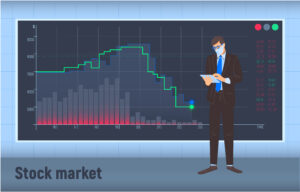Introduction to Litecoin
Litecoin (LTC) is one of the oldest and most recognized cryptocurrencies in the market, created by Charlie Lee in October 2011. It was designed to provide a fast, secure, and low-cost alternative to Bitcoin, often referred to as the “silver to Bitcoin’s gold.” Utilizing a peer-to-peer network, Litecoin enables users to send and receive payments without the need for intermediaries, which is a core principle of blockchain technology.
Litecoin operates on a decentralized network, relying on a technology called blockchain, which is a distributed ledger that records all transactions across a network of computers. Each transaction is verified by network nodes through cryptography and recorded in a public distributed ledger known as a blockchain. The primary goal of Litecoin is to facilitate quick and low-cost transactions, making it an attractive option for users and merchants alike.
Historical Price Overview
Early Days and Initial Growth
When Litecoin was launched in 2011, its initial price was negligible, often trading for just a few cents. The cryptocurrency market was still in its infancy, and Litecoin was one of the first altcoins to gain traction. By mid-2013, Litecoin prices began to surge, reaching around $50 in November 2013. This period marked the beginning of a significant interest in alternative cryptocurrencies and set the stage for future price movements.
The 2017 Bull Run
The year 2017 was a watershed moment for many cryptocurrencies, including Litecoin. As Bitcoin reached unprecedented heights, other cryptocurrencies followed suit. In December 2017, Litecoin reached its all-time high of approximately $360. This surge was fueled by a combination of factors, including increased media attention, growing public awareness of cryptocurrencies, and a surge in retail investment.
Market Correction and Volatility
Following the monumental highs of late 2017, the cryptocurrency market faced a significant correction in 2018. Litecoin’s price fell dramatically, along with the broader crypto market, and by the end of 2018, it had dropped to around $30. This period of volatility highlighted the speculative nature of cryptocurrencies and the influence of market sentiment.

Recovery and Resilience
Despite the downturn, Litecoin demonstrated resilience. By 2019, the price began to recover, driven by renewed interest in cryptocurrencies and technological advancements within the Litecoin network. The introduction of the Mimblewimble protocol aimed to enhance privacy and scalability, attracting attention from both developers and investors.
Recent Price Trends
In 2020 and 2021, Litecoin, like many cryptocurrencies, experienced significant price fluctuations. The COVID-19 pandemic and subsequent economic stimulus measures led to a surge in interest in digital assets. Litecoin’s price climbed again, reaching levels around $200 in early 2021. However, the market remained volatile, with prices subject to rapid changes based on broader market trends, regulatory news, and technological developments.
Current Price Analysis
As of the latest data, the price of Litecoin fluctuates based on various factors, including market demand, investor sentiment, and macroeconomic conditions. To provide an accurate price analysis, it is essential to refer to reliable financial platforms and cryptocurrency exchanges. The price of Litecoin is often influenced by several key factors:
Market Sentiment
Market sentiment plays a crucial role in determining the price of Litecoin. Positive news regarding adoption, partnerships, or technological advancements can lead to price increases, while negative news can drive prices down. Social media, news articles, and public discussions can significantly impact investor behavior and market dynamics.
Technological Developments
Technological advancements within the Litecoin network are vital for its growth and price stability. Upgrades, such as the implementation of the Lightning Network, aim to improve transaction speed and reduce fees. Additionally, the introduction of privacy features can enhance Litecoin’s appeal, making it more competitive in the cryptocurrency space.
Regulatory Environment
The regulatory landscape surrounding cryptocurrencies is continuously evolving. Changes in regulations can have a significant impact on Litecoin’s price. Clearer regulations may bring more institutional investment, while unfavorable regulations can lead to price drops. Investors must stay informed about regulatory developments in key markets to assess potential impacts on Litecoin’s price.
Competition and Market Dynamics
The cryptocurrency market is highly competitive, with numerous coins vying for attention. Litecoin’s price can be affected by the performance of other cryptocurrencies, particularly Bitcoin, which often sets the market trend. Additionally, the emergence of new altcoins with innovative features can impact Litecoin’s market share and price.
Adoption Rates
The adoption of Litecoin for transactions is a critical factor influencing its price. The more businesses and individuals accept Litecoin as a payment method, the higher the demand will be, potentially driving up the price. Partnerships with payment processors and merchants can enhance Litecoin’s utility, leading to increased adoption.
Technical Analysis of Litecoin
Price Chart Analysis
Technical analysis involves examining historical price charts and patterns to predict future price movements. Traders often use various indicators, such as moving averages, Relative Strength Index (RSI), and Fibonacci retracement levels, to identify potential entry and exit points. Analyzing Litecoin’s price charts can provide insights into market trends and potential price targets.

Moving Averages
Moving averages are commonly used indicators in technical analysis. The 50-day and 200-day moving averages are particularly popular among traders. A crossover between these moving averages can signal potential bullish or bearish trends. For instance, if the 50-day moving average crosses above the 200-day moving average, it could indicate a bullish trend, while the opposite could signal a bearish trend.
Support and Resistance Levels
Identifying support and resistance levels is crucial for understanding price movements. Support levels are price points where buying interest is strong enough to prevent the price from falling further, while resistance levels are points where selling interest is strong enough to prevent the price from rising. Analyzing these levels can help traders make informed decisions about buying or selling Litecoin.
RSI and Market Sentiment
The Relative Strength Index (RSI) is a momentum oscillator that measures the speed and change of price movements. An RSI above 70 indicates that an asset may be overbought, while an RSI below 30 suggests it may be oversold. Monitoring the RSI can provide insights into market sentiment and potential reversal points for Litecoin’s price.
Fundamental Factors Influencing Litecoin Price
Supply and Demand Dynamics
The basic economic principle of supply and demand plays a significant role in determining Litecoin’s price. The total supply of Litecoin is capped at 84 million coins, creating scarcity. As demand increases, particularly during bullish market conditions, the price tends to rise. Conversely, if demand decreases, the price may fall.
Halving Events
Litecoin undergoes halving events approximately every four years, reducing the block reward miners receive for validating transactions. This event creates a supply shock, as fewer new coins are introduced into circulation. Historical data suggests that halving events have historically led to price increases in the months following the event.
Institutional Interest
The growing interest from institutional investors in cryptocurrencies has had a significant impact on the market. Companies and investment firms are increasingly allocating funds to cryptocurrencies, including Litecoin. Institutional interest can drive demand and positively influence Litecoin’s price.
Economic Factors
Macroeconomic factors, such as inflation rates, interest rates, and geopolitical events, can also impact Litecoin’s price. In times of economic uncertainty, investors may turn to cryptocurrencies as a hedge against traditional financial systems, driving up demand and prices.
Future Outlook for Litecoin
Market Predictions
The future price of Litecoin remains uncertain and is subject to various factors, including market sentiment, technological advancements, and regulatory developments. Analysts and traders often provide price predictions based on historical data and market trends. While some may predict bullish trends due to increased adoption and technological upgrades, others may caution against potential market corrections.

Technological Innovations
The continued development of the Litecoin network will play a crucial role in its future price movements. Innovations, such as enhanced privacy features and scalability solutions, can attract new users and investors, positively impacting Litecoin’s price.
Regulatory Landscape
The evolving regulatory landscape will also influence Litecoin’s future. Clearer regulations and increased acceptance of cryptocurrencies by governments can foster a more stable environment for Litecoin, potentially driving prices higher. Conversely, unfavorable regulations could hinder growth and negatively impact prices.
Competitive Landscape
Litecoin faces competition from other cryptocurrencies that offer similar features or innovations. The emergence of new projects can impact Litecoin’s market share and price. Staying competitive through technological advancements and partnerships will be essential for Litecoin’s growth.
Conclusion
Litecoin has established itself as a significant player in the cryptocurrency market, with a rich history and a promising future. Its price is influenced by various factors, including market sentiment, technological developments, regulatory changes, and competition. Investors must stay informed about these factors and conduct thorough research to navigate the volatile cryptocurrency landscape.
As Litecoin continues to evolve, its price will likely remain subject to fluctuations driven by market dynamics. For those interested in investing in Litecoin, it is crucial to stay updated on market trends, regulatory developments, and technological innovations to make informed decisions.
In summary, Litecoin’s price is a reflection of a complex interplay of factors that influence its demand and supply. By understanding these dynamics, investors can better navigate the ever-changing landscape of cryptocurrencies and make informed decisions about their investments in Litecoin.


Pingback: Best Coins To Invest In Right Now - Info Spher Hub